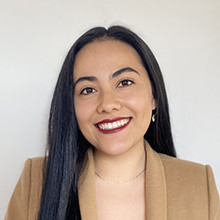About the PPI: A Poverty Measurement Tool
The Poverty Probability Index (PPI®) is a poverty measurement tool for organizations and businesses with a mission to serve the poor. The PPI is statistically-sound, yet simple to use: the answers to 10 questions about a household’s characteristics and asset ownership are scored to compute the likelihood that the household is living below the poverty line. With the PPI, organizations can identify the clients, customers, or employees who are most likely to be poor, integrating objective poverty data into their assessments and strategic decision-making.
- Innovations for Poverty Action (IPA)
Why measure poverty?
Your organization may operate in a highly-impoverished area, but without objective poverty data on the households you reach, social performance management will rely on assumptions. Organizations that collect poverty data from all or a statistically significant sample of households they reach are able to:
- Measure poverty outreach (i.e. the portion of customers, clients, or employees who live below the poverty line),
- Improve the performance of the intervention among the poor and poorest, and
- Track poverty levels over time.
With these data, management staff can make informed strategic decisions and can provide stakeholders with objective evidence that the organization is reaching the poor.
How does the PPI work?
Unlike other poverty measurement methods, the PPI was designed with the budgets and operations of real organizations in mind; its simplicity means that it requires fewer resources to use. The PPI is a set of 10 easy-to-answer questions that a household member can answer in 5 to 10 minutes. The questions are simple – “What material is your roof made out of? How many of your children are in school?” The scored answers provide the likelihood that the survey respondent’s household is living below the national poverty line and other internationally-recognized poverty lines.
Example
The mission of Organization X is to provide discounted vocational training to Colombia’s poorest citizens. The organization uses the PPI for Colombia to determine if they are, in fact, recruiting clients who live below the poverty line.
The organization administers the survey to one client, and that client receives a score of 30. According to the look-up table for the PPI for Colombia, that client’s household has a 42.6% likelihood of living below the $2.50/day 2005 PPP poverty line. After surveying a statistically significant sample of clients, management discovers that the average likelihood of clients living below the $2.50/day poverty line is 60.7%. Therefore, the organization concludes that 60.7% of its clients are living below the $2.50/day poverty line.
Who builds the PPI?
The PPI is currently housed at Innovations for Poverty Action (IPA). Below you can find more information on the team in charge of developing the PPI and the organization itself.
The PPI Team
IPA has a team of experts that develops and manages the PPI on a daily basis:
 Elliott Collins, Director, Poverty Measurement
Elliott Collins, Director, Poverty Measurement
ecollins@poverty-action.org
Elliott Collins serves as the Director for IPA's Poverty Measurement program, which develops rigorous methods like the PPI to
Read Elliott's full bio on the IPA website.
 David Rodriguez, Associate Program Manager
David Rodriguez, Associate Program Manager
drodriguez1@poverty-action.org
David Rodriguez works as Associate Program Manager for IPA's Poverty Measurement program, providing strategic and organizational support, overseeing client and donor communications, and guiding business development.
Read David's full bio on the IPA website.
 Manuel Cardona, Senior Research Associate
Manuel Cardona, Senior Research Associate
mcardona@poverty-action.org
Manuel Cardona serves as Senior Research Associate for IPA's Poverty Measurement Program. Before joining the Poverty Measurement team, Manuel worked as Research Associate at IPA Peru, implementing and evaluating randomized controlled trials.
Read Manuel's full bio on the IPA website.
 Isabella Contreras, Research Associate
Isabella Contreras, Research Associate
icontreras@poverty-action.org
Isabella Contreras works as a Research Associate for IPA's Applied Research & Methods group, supporting the Poverty Probability Index and Research Methods Initiative.
Read Isabella's full bio on the IPA website.
 Carlie Lamke, Research Associate
Carlie Lamke, Research Associate
clamke@poverty-action.org
Carlie Lamke works as Research Associate for IPA's Applied Research & Methods group, supporting the Poverty Measurement Program and Research Methods Initiative.
Read Carlie's full bio on the IPA website.
Innovations for Poverty Action (IPA)
IPA is a non-profit research and policy organization that discovers and promotes effective solutions to global poverty problems. IPA brings together researchers and decision-makers to design, rigorously evaluate, and refine these solutions and their applications, ensuring that the evidence created is used by decision-makers to improve the lives of people. In this way, IPA is helping to create better programs and policies. As part of our approach, we work with governments, funders, NGOs, for-profits, and civil society to answer policy-relevant questions and provide actionable inputs and solutions following three key components: (1) creating high quality, policy-relevant evidence; (2) proactive, thoughtful, and detailed review, synthesis, and clear communication of the evidence to inform decisions; and (3) equipping decision-makers to use evidence by building deep partnerships, engaging decision-makers throughout the research process, and helping them develop continuous learning agendas adapted to their needs.
In July 2016, in order to facilitate the long-term sustainability of the tool, the PPI moved its home from Grameen Foundation—where it had been hosted since its inception in 2005—to IPA and a new construction methodology was created. In October 2017, the PPI, formerly known as the Progress out of Poverty Index, was rebranded as the Poverty Probability Index. This change better reflects what the tool actually is and does, as its uses are much broader than the term ‘Progress’ in the old name implied.

